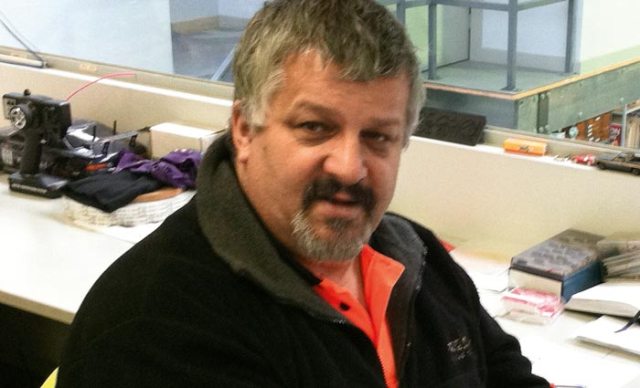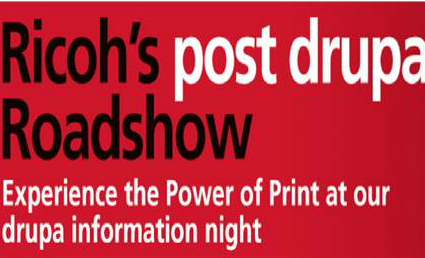
No one could accuse ProPrint readers of lacking opinions. The growth of our LinkedIn community is not just evidence of printers’ well-informed perspectives but also proof that they want to share their experiences. In this difficult market, it is easy to feel alone against the world’s problems. Not so. The lively debate on our LinkedIn Group demonstrates that many readers are facing the same issues.
Here we offer some of the best comments to have been made in the community in recent times. We urge all readers to head online now, register and join the debate at www.proprint.com.au/linkedin.
If you have a perspective on any of the comments below, don’t just sit there – make your point. Maybe you want to praise your best client. Or moan about a tight-fisted bank. Or explain why your taxes are too high. Follow the unique link below each headline and join the discussion.
In the t-shirt printing business, I have a few multinational competitors who definitely pay much less tax than my business does, which makes it harder to compete. After lean years, there has been consolidation in the market and a few multinationals buying up some strugglers and combining the business. We don’t like tax but without the taxes how does the parcel get to your door? Someone paid for the infrastructure.
Kevin Rack, owner, Mabuzi
I agree with Kevin. Everyone would like to pay less but we all like to use the roads, hospitals and schools. And for the amount of public infrastructure my company uses to generate a profit, I am pretty happy with the amount I pay.
Baden Kirgan, managing director, Jeffries Printing
I think we are definitely slugged too much and pay way too many different taxes imposed at state and federal level. I think we are one of the most heavily taxed countries in the world. Businesses in Australia have no incentive to operate here – just ask Ford, Bonds etc. From a small company point of view, why have company tax? The directors already pay their income tax, payroll tax and GST. If there was no company tax, we would have incentive to re-invest, employ more people and actually have incentive to grow our companies.
Tony Perini, owner, IntoPrint
Does your firm donate to charity?
We have been involved with the Rotary Club of Essendon for around 10 years. We have been involved in building a school, the fistula program and the New Hope Orphanage in Kenya. Also since 2001, we have been donating equipment to the children’s hospital in Myanmar as well as paying for another school to be built and the ongoing costs associated with the running of the school. In the Philippines, we are involved with Bahay Tulian, which looks after the homeless kids on the street. When you see what a couple of hundred dollars can do, it’s amazing. If you ever get the chance, go and have a look for yourself.
Alf Puglia, manager, Precision Forme Cutting
We currently donate to a number of charities. If you don’t have a lot to give, everyone should get onto kiva.org. You make microloans to people trying to start their own business in a third-world country. They repay the loan then you can re-loan the funds.
Jason Xuereb, co-owner, Mediapoint
It appears to be a common practice among printers to offer “mates rates” for charities and not-for-profits. We have many of both within our client list and its truly rewarding to know they are not being ripped off, but rather funds raised are being put to good use and not being wasted unnecessarily. They are all well aware of the discounted pricing offered to them by Kopystop and always most grateful.
Art Tchetchenian, managing director, Kopystop Digital Print Solutions
Should the buyer of an insolvent firm take responsibility for its debts?
The ability to purchase from the wreckage is only as useful as the value of particular assets. Debts are not assets so by default you wouldn’t buy them. The job of the liquidator is to assess the value of the balance sheet as a whole, and if the goodwill, brand name and other assets are of significant value, then there may well be sufficient cash realised to repay debt. No lawyer in their right mind would allow a client to actually contract to have the debts assigned to them – who knows what debts or other liabilities (read: legal actions) might emerge from the mess? It is a different story where a shareholder or primary driver of a liquidated company is involved. In those circumstances, the debt should follow the principals relentlessly.
Kieran May, director, PIAA
As it would likely mean less, if any, sales of a liquidated company then no. As these sales mean that some if not all employees keep their jobs.
David Hunt, national credit manager, Fujifilm
There should be no way a shareholder/director should be able to just buy the “good bits” of a company that they have had a role in bank-rupting. It’s a different case entirely with “arms length” external purchase of a distressed company’s viable assets.
Michael Santer, owner, Jamida Group
The rules of insolvency apply independent of the industry. What the creditors of any business need to constantly address is their appetite for reward versus risk and the capacity of their balance sheet to absorb the risks of failure. In the present climate, many suppliers of debt to the print industry have obviously forgotten this fundamental. Let the weak printers fail. Eventually the survivors will make an acceptable ROI.
Graham Critchley, Paperlinx investor
What are your profitable value-adds?
All finishing services should be profitable value-adds. Most firm don’t charge accord-ingly for these. Finishing services is any-thing from round cornering, die-cutting, celloglazing, guillotining, hole drilling, folding, foiling, binding and much more.
Sharon Sewell, owner, Varsity Graphics
I agree with you 100%, Sharon. We find a lot of our competitors don’t charge accordingly for finishing. This is crazy. For some reason printers will agonise over the hourly rate to charge out their presses but charge nothing for finishing even though they are leasing hundreds of thousands of dollars of equipment to provide the service.
Justin Ward, managing director, Buzz Print
Is it getting harder to deal with banks and insurers?
Here in the UK, from our perspective as a leading MIS provider, the banks are still very nervous about lending. Overdraft extensions are difficult to get without jumping through hoops with extra security put in place. We use a finance broker to source funding for our clients to purchase their MIS. Leasing an MIS makes a lot of sense. It basically means you see the return on investment as you’re paying for the system – so the net effect is it costs you nothing. We have definitely seen a change in the lending ratios. Whereas previously a lender would look at a company’s net-worth and lend say 5:1 (a company worth £100,000 could borrow £500,000), now the ratios are more like 2:1 or 3:1. Also we have seen the demand for director’s guarantees almost become mandatory.
Trevor Cocks, director, Accura MIS
Tell us about your best client. What makes them so great?
The term ‘best client’ has experienced something of a definition assessment in recent times. What once was looked upon as the essential elements of a good client has seen those traditional lines blur. While we appreciate and rely on large clients for sustainability, we are finding our basket can be filled out nicely with some smaller eggs, less prone to cracking.
Andrew Durnford, sales & marketing manager, Industrial Printing Company
Do you have any tips for improving cashflow?
Tightening up of trading terms shouldn’t be allowed to affect good paying companies. I have been in this business for more than 30 years and we always pay inside the due date terms. What happens to “little guys” who do – and have always done – the right thing?
Michael Santer, owner, The Jamida Group
Exactly, Michael, it seems that in many cases the minority spoil it for the majority.
Terry Mays, business development manager, G2 Solutions
A long-term client tells you to drop your price 10%. What do you do?
Dropping price sets a precedent for future request to drop price again. To stop the flood gate effect, increase the aggregate value of your service – provide an additional item or service that tends to increase your brand and service value and not reduce your service worth. Give bonus materials or other items that are relevant to your client’s business, but does not present significant monetary value for your business.
Nick Khachatryan, director, Vahan Advertising
If the client did not want to still use you, they would not be having the conversation. Tell them you get what you pay for and stick to your guns. If you do not put a value on your services, no one else will.
Alan Fawcett, co-owner, Watermarx Graphics
Comment below to have your say on this story.
If you have a news story or tip-off, get in touch at editorial@sprinter.com.au.
Sign up to the Sprinter newsletter


